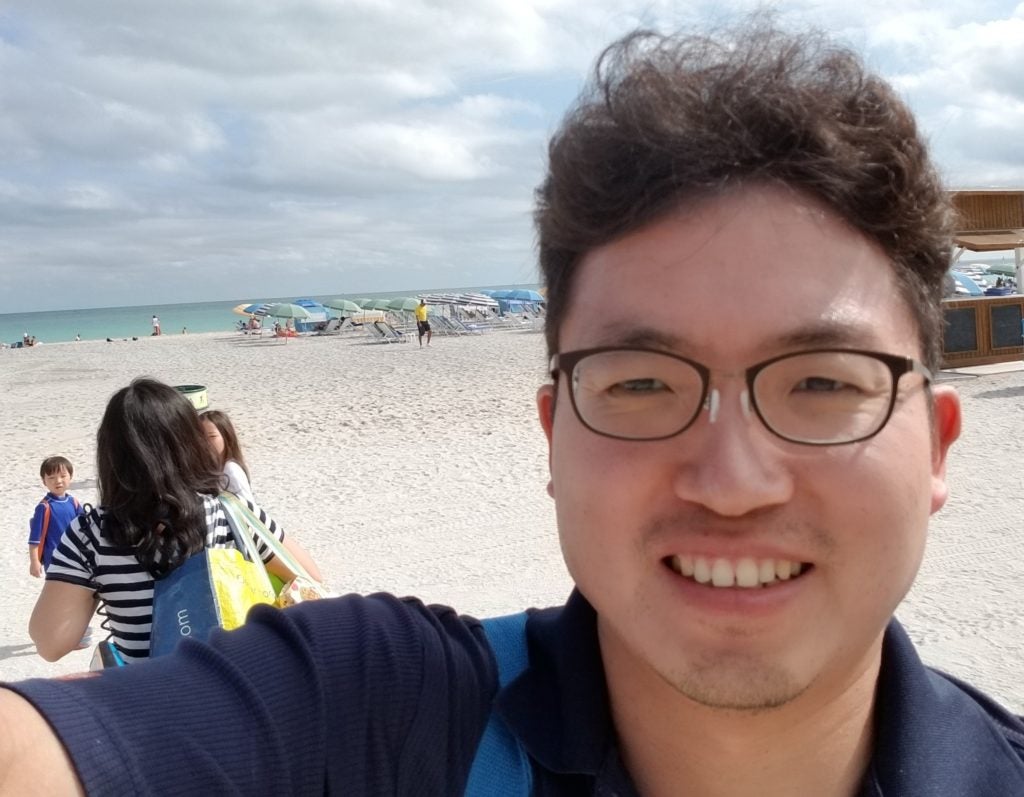Dohoon Kim, (Biostatistics, MS 2012)
Posted in Student Spotlight Student Stories | Tagged alumni, MS, students

Dohoon Kim is an alumnus of the Department of Biostatistics, Bioinformatics, and Biomathematics department at Georgetown University. He graduated with an MS in Biostatistics in 2012 and holds a BS in Biology from Seoul National University and an MS in Biology from Gwangju Institution of Science and Technology.
Dohoon is happily married with two adorable kids, living in Ellicot City, MD and a Data Scientist at the Walter Reed Army Institute of Research.
How did you get interested in studying Biostatistics? What was your background before Georgetown?
Biostatistics was a “hot” major [and still is a popular, high in-demand field] in the US. Before the MS program, I was a field application specialist at Promega Corporation, a Biotech company. I was and still am working on my own biotech company foundation. Since I was living in Frederick, MD, the nearest prominent university to me was Georgetown University. I am proud of its repuation.
What did you love most about the MS program?
I loved taking R programming with Dr. Li, Practicum with Dr. Korostyshevskiy, Quantitative Data Analysis with Dr. Makambi, and Epidemiology with Dr. Loffredo. I was very satisfied with the organized curriculum. The friendly staff and faculty were also very helpful.
What was challenging about the MS program?
Statistical programming—SAS and R—was tough for me. At the time, I was just a beginner
Please describe your current work and job responsibilities.
My working area is somewhere among Bioinformatics, Biostatistics and Computer Science. I was recently promoted to Data Scientist at the Walter Reed Army Institute of Research in Silver Spring, Maryland. I design and implement software systems for high-throughput data analysis in a high-performance computing environment. That includes autogating, clustering, COMPASS, and Next Generation Sequencing analysis using UNIX, R, Python, and Matlab. I build analytic workflows for automated deployment of bioinformatics tools for interpreting flow cytometry, NGS, GWAS or other immunological data sets. It is mostly bioinformatics and computational work, but there is alot of biostatistical analysis too as part of bioinformatics projects.
How do you use what you learned in our program in your current work?
I learned clustering method, KNN, viSNE, bioinformatics, (non)parametric methods, linear regression, and FDR. R programming was the most useful for me, and I have used all of these at work. [To gain] high level R skills, I searched many websites and forums and read many bestselling R related books.
What advice would you give to current and prospective students?
- As an international student, my Visa status was the most important thing to obtain for a job. As a foreigner, you are a underdog in the job market even if you have full potential to be a good biostatistician. Therefore, if there is very small chance to get a H-visa at your current job, you must get it, no matter the cost.
- Choose a difficult Practicum topic—it may [be stressful] in the final semester, but it could be helpful to get the right job [especially since] some companies care a lot about Practicum topics [and the data analysis aspects of the research project].
- Get a strong recommendation letter. Make your resume strong and concise. Too many skills on your resume can make [potential] employers skeptical about your skill level.
- Knowing one [software] program thoroughly is better than knowing lots of programs at the intermediate level! Remember, some companies in the software field have their own programming tests for new employee candidates.
- Make a strong network with everybody, if possible. Be kind to everyone you meet, it will make “magic” for you!
- Lastly, HR staff members are always smarter than you! They have met many people like you, so they can see through you and you cannot hide anything in front of them. So, be relaxed at your interview!
What is your favorite hobby?
Tennis, golf, surfing, snowboarding.
Where would you love to travel to?
Cancun, Japan, Vancouver, Thailand, California, and Katmai.
Updated March 2018
